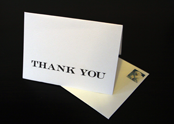Over last weekend, I’ll bet many of you, like me, were busy packing away ornaments, deciding which candles can be used again, and trying to find a youth organization to give our retired trees to for recycling. Or at least, again, like me – thinking about it!
And now it’s serious back-to-work time. Time to try something new. I’m not quite ready for 2014 yet – what happened to 2010, anyway? So, with a final salute, let’s wrap up 2013 with the Best of the Blog – a short collection of my top nineteen posts of that year, as judged by the number of “likes” each garnered. An “e-book” for want of a better name, and the first e-book I’ve ever done.
I’d like to give this compilation to you as a thought-starter. A new way of thinking about your writing. Or maybe as a way to address a New Year’s resolution to strengthen your on-the-job writing, making it faster, easier, and more effective. Totally free. Please email me (gail@gailtycer.com), and I’ll send you the free link.
We’ll talk about:
1. If You’ve Ever Said, “I Wasn’t Good at English in School…” Read This!
2. How to Say It When You Can’t Think of What to Say
3. Shorter, Fewer Emails
4. Strategic Email
5. Meeting Minutes
6. Writing a Successful Instruction
7. Writing a Powerful Presentation – Getting Started
8. Writing a Powerful Presentation – Finishing Strong
9. How to Write a Business Thank You Note
10. Nine Places to Find Ideas for Your Blog Post
11. “Spin”
12. Hide, Hedge, Mask, and Cloud?
13. How to Offend, Anger, or Frustrate Without Realizing It
14. How Many Common Writing Errors Do You Make?
15. Stronger, More Powerful Sentences
16. What Was That Again?
17. Words That Create Mix-Ups
18. Words, Words, Words…
19. Fatigue-Reducing, Confidence-Building Phrases
We’ll also include a few of our weekly Quick Tips, answering some of those pesky grammar questions.
So here’s to 2013, wrapped up with a bow – and on to a great new year: 2014. Let me know how I can help you to achieve your business writing goals this year. I’m totally committed to helping you write less, say more – and get results in 2014.
If you like what you’re reading, we invite you to subscribe to our blog.
Gail Tycer offers business writing workshops and presentations, executive coaching, consulting, and writing services. To discuss how we can help, call Gail at 503/292-9681, or email gail@gailtycer.com





 “They seem to know what they’re doing,” might be one desirable judgment. “They sound like they’re easy to work with,” another. If, after reading your written communication, your reader were asked, “What do you think about (your organization)?” what do you want him or her to say? Isn’t there a bit of persuasion there?
“They seem to know what they’re doing,” might be one desirable judgment. “They sound like they’re easy to work with,” another. If, after reading your written communication, your reader were asked, “What do you think about (your organization)?” what do you want him or her to say? Isn’t there a bit of persuasion there?
